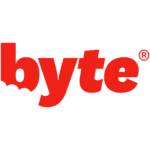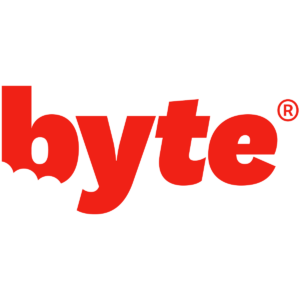The condition of your teeth tells a lot about you as a person. Although straighter teeth is not a necessity, it does a lot of improvement not only to your smile but also to your confidence.
Because of this, cosmetic dentistry products have been in demand these days. Dental services and office visits are not exactly affordable and these products offer a cheaper alternative – thanks to advancements in dental and orthodontic technology.
One of these products that are in demand is invisible braces or clear aligners for straighter teeth. They offer a convenient solution to straighten your teeth that anyone can avail of.
Invisible braces have the same purpose as traditional braces – they straighten your teeth gradually and helps address any bite issues. The difference is that invisible braces are made out of plastic, are removable, and are clear. You can take them out to eat food or brush your teeth. And most of the time, people hardly notice that you have them on.
More people who have tried wearing the traditional braces are switching to invisible braces because they are more affordable and easier to maintain. The insides of your cheek will never be cut with a sharp metal bracket ever again.
Among the clear aligner brands, Invisalign has remained the most popular product in the market. But given the demand for invisible braces, more brands have started producing their own line of aligners as well and have given Invisalign some competition. One of these new brands is Candid.
Invisalign and Candid are considered to be among the top brands in the market today. If you are trying to figure out which treatment option is best for you, you are in the right place. In this article, we will determine which one is better when it comes to Invisalign vs Candid, their differences, and how Candid and Invisalign works.
🥇 Why You Should Choose Byte

Best Value (4/5)
Plain and simple, Byte offers fantasic value for money against most competitors with the full treatment costing less than $2000.
Best treatment time (5/5)
Byte’s HyperByte vibration device cuts treatment time by almost half. Many customers complete treatment in just 5 months. Most dentists charge large extra fees for similar devices.
Generous Discounting (5/5)
Byte offers some great discounts through select partners like us. Claim your discount today and see how much you could save.
Insurance (5/5)
Candid vs. Invisalign: Brand reputation
Candid
Candid is a company that joined the market in 2017. Although they are new in the aligner treatment game, they have been able to compete with older brands because of their quality service (they work exclusively with a large network of licensed and experienced orthodontists) and remote options for their consumers.
Invisalign
Invisalign has been around since 1997, where it was first known as Align Technology. Align Technology developed the first invisible braces series and treatment and later changed their name to Invisalign. Being one of the pioneers in cosmetic dentistry and braces, the Invisalign brand is one the most popular and well-known brands in the market today.
Candid vs. Invisalign: How does it work?
Candid
Getting invisible braces from Candid is a remote and online process. Candid cuts out the middle man which results in a lower price since they deal directly with their consumers. You do not need to go to a dental office.
You can get your personalized Candid clear aligners without setting foot in an orthodontist’s office or in their studio. To get started, all you have to do is order the Candid basic starter kit and they will send it to you. The basic starter kit will contain everything you need to create an impression of your teeth. Follow the instructions and create an impression then send it back to Candid.
Once Candid receives your impressions, they will be assessed by their in-house orthodontist. If you qualify for Candid treatment, they will send you all the aligner trays you will need. If your dental case is too severe for virtual treatment or you need extra orthodontic work, Candid will refund you for the modeling kit and will refer you to a network of orthodontists that can help you.
The treatment with Candid does not end there. Take note that invisible braces are a treatment that needs constant checkups to see how your teeth are progressing. You will check in with Candid’s orthodontist by sending in photos of your teeth through an app. The Candid orthodontist will let you know when you are ready to continue to the next set of clear aligners.
As you can see, everything happens remotely and online. This lets Candid give affordable packages to their consumers and allows you to save money while getting treatment.
Since the treatment is done virtually, there may be times when the clear aligners will not be as precise compared to when they are fit in an actual dental office. However, if your dental issues are just mild, the whole process can work perfectly for you.
You can also check if there is a Candid studio near you if you want to make sure you get an accurate clear aligner. You will be getting a face to face interaction with a Candid orthodontist and they can take the 3D scans of your teeth for free.
Candid offers teeth whitening treatment during your straightening journey so you can end up with straighter and whiter teeth. You will receive a free tube of their whitening foam. All you have to do is put the whitening foam in your aligners to treat your teeth. The formula helps freshen your breath and it is gentle enough to be kept overnight.
After treatment, you will have to wear a retainer at night to make sure that your teeth will stay straight. Candid offers a custom-made retainer that costs about $99.
Invisalign
When you get Invisalign aligners, you have to actively see a dentist or orthodontist in their office – and this dentist or orthodontist must be someone who has been trained to fit patients for Invisalign clear aligners.
The Invisalign dentist will be the one who will take scans and impressions of your teeth, prescribe the appropriate treatment plan, and will be the one sending an order to Invisalign for the aligner trays that you will need.
Invisalign work with 3D imaging and advanced technology to design your personalized clear aligner trays. You can always be assured of a perfect fit with Invisalign. The clear aligners will place slight and manageable pressure on your teeth t0 gently move your teeth and realign them back into position gradually. You may need to have your teeth filed to make room for your teeth to move.
You will be replacing your clear aligners every few weeks as your teeth progress so you will be making several dental office visits. The entire process and results are actually mapped out from the start so you can actually see what the end results will be before you even begin the Invisalign treatment plan via before and after images.
The course of the entire treatment plan from Invisalign will have to be done in person by the Invisalign dentist you started with. So, this means that you have to do office visits every two weeks to have your progress checked and to see if you will be needing a new set of aligner trays.
Invisalign offers teeth whitening service but you have to pay an additional fee for it. When the treatment is over, you will also be asked to wear a Vivera retainer to make sure that your teeth will stay straight.
Candid vs Invisalign: Requirements
Candid
To get a clear aligner treatment from Candid, you must be at least 18 years old and above. Minors who are aged 16 or 17 can also get Candid aligners as long as they can get written consent from their guardian.
Aside from the age requirement, Candid requires you to have good oral health. They will not offer treatment to those whose teeth are in bad shape as they believe that these cases should be treated by the professional care of an orthodontist.
Invisalign
There are clear aligner treatment options available for all ages with Invisalign. Aside from treatments for teens and adults, they also have Invisalign First, which is Invisalign work for the dental foundation of young kids between the ages of 6 and 10 years old.
Like Candid, you should have good oral health before you can get Invisalign treatment.
Candid vs Invisalign: Treatment
Candid
Candid’s at-home clear aligner treatment is a major convenience because you do not have to leave the house to get your teeth treated. Everything is shipped to you and you use an app to do online check ins.
Candid is also partnered with Dental Monitoring, a medical tech company. Dental Monitoring helps Candid with their AI remote monitoring system which Candid users can access for free. All you have to do is download the Dental Monitoring app and follow the instructions to take pictures of your teeth. The scans will then be sent to your orthodontist.
Candid only works with orthodontists in their treatments. Most people think orthodontists and dentists are the same but orthodontists rank higher. To be an orthodontist, you need to first become a dentist. Then, you have to attend a few years of training to get exclusive knowledge on teeth straightening and other dental methods.
With Candid, you have to do check ins with your orthodontist every 10 days. This makes a difference since the usual range for adjustments and aligner changes in a dental clinic is every 2 weeks. Since you are checking in every 10 days, you could be ready for your new set of aligners earlier and this will help reduce the treatment time by about 20 to 30%.
Take note that Candid invisible braces can only treat mild to moderate cases of misalignment, which includes minor cases of crooked teeth, crowded teeth, and small teeth gaps. Candid will reject you as a candidate for their aligners if you have a severe case of misalignment, existing dental restorations (dental implants, bridges), and untreated dental conditions (cavities or gum disease).
Invisalign
Invisalign clear aligner treatment has a more personal approach since you are required to see an Invisalign-trained dentist to get an Invisalign clear aligner. Required office visits assures you of getting professional guidance for the whole treatment.
With Invisalign, you can work with any dentist as long as they are trained for treatment with Invisalign. If your dental issues are severe, you will have to look for an orthodontist that is also trained by Invisalign to give you the specialized orthodontic treatment you will need.
Invisalign treatment allows you to add buttons or attachments to your teeth if your dentist or orthodontist will deem it necessary. These buttons or attachments will give extra force for tooth movement and tooth rotation. This is why Invisalign aligners are more capable of treating more severe cases of misalignments.
Invisalign aligners have a wider range when it comes to the conditions that they can treat. They can deal with crooked and crowded teeth, open bite, underbite, overbite, and teeth gaps. So if you have more straightening work, Invisalign will do a better job.
Invisalign vs Candid: Treatment time
Candid
Candid instructs you to wear your aligners for a minimum of 22 hours each day to align your teeth effectively. Candid’s average treatment time can range from 6 months to 11 months.
Invisalign
Invisalign instructs you to wear your aligners for at least 20 to 22 hours each day so it offers more flexibility vs Candid. Invisalign also offers a wider range of treatment times, depending on the condition of your teeth. Mild cases can have a treatment time of 3 months while a more comprehensive Invisalign treatment plan may have an average treatment time of up to 18 months.
Invisalign vs Candid: Material
Candid
Candid is made out of clear BPA-free thermoplastic and a phthalate-free plastic known as Zendura. The material is reasonably stain-resistant.
The clear aligners from Candid are straight-cut so there may be a slight overlap on your gums.
Since Candid does not offer attachments, the clear aligners will be less noticeable and the surface stays smooth.
Invisalign
Invisalign is also made out of clear BPA-free thermoplastic material like Candid, only they also use a patented material called SmartTrack too. The material is reasonably stain-resistant.
Invisalign will have scallops on their aligners to match your gum line so the fit is more comfortable.
Invisalign offers supplemental attachments like buttons or elastics. If they are recommended for your dental condition, they will make your clear aligners visible.
Candid vs Invisalign: Customer service
Candid
With remote treatment, Candid provides responsive and excellent customer service. You can reach out to their customer service representatives by web chat, email, or phone from 9:00 AM to 7:00 PM EST any day of the week. You can also reach out to Candid’s social media pages and you will be given a response within 24 hours. You can also drop by a Candid studio any time.
Invisalign
With Invisalign, since you get personalized and hands-on care from a dentist or orthodontist, their offices serve as your customer support. You can call, visit, or email them during their office hours.
Candid vs Invisalign: Price
Candid
A Candid treatment will cost you $2400. You have the option to pay Candid in full or make a down payment and pay monthly after that. The down payment is $399 and you will be asked to pay $99 per month for 24 months.
You should also know that the consultations with Candid Co.’s orthodontists are for free as they are done remotely. No need to pay extra money for office visits.
Invisalign
When it comes to Invisalign, the total cost will depend on the condition of your teeth. Naturally, more complex cases will cost more money since you will be needing more aligners and a longer treatment time. It is said that the cost of getting Invisalign treatment ranges from $3000 to $8000.
Invisalign treatment requires you to do in-office consultations. These office visits can cost you a few hundred dollars per visit.
FAQs
Is Invisalign better than Candid when it comes to teeth straightening?
This will depend on the condition of your teeth. If you have serious misalignment issues, Invisalign has the advantage over Candid since they are more flexible and requires you to work with a dentist or orthodontist. But if you only have a mild to moderate case and you do not need any extra orthodontic work, Candid is the better option. Candid can treat your dental issues in just 6 months. Invisalign has a treatment time of up to 18 months.
Is Candid cheaper than Invisalign?
Candid is cheaper than Invisalign and has more flexible payment options – you can pay in full or do a down payment and make a payment per month. Everything can be done remotely from your home so you do not need to pay for dental office visits. With Invisalign, you also have to pay for every dental office visit you make, which is required for an Invisalign treatment plan.
Is Candid clear aligners legit?
Candid clear aligners are legit. Candid may be a newer player in the industry but that does not mean they are less capable. Candid products are FDA-approved and they exclusively work with licensed orthodontist in every state.
Is teeth straightening covered by insurance?
This will depend on your insurance provider. Most insurance companies will not cover a minor orthodontic treatment since it is considered to be a cosmetic procedure and not a medical necessity. But some insurance companies can cover them partially. The only way to know for sure is to contact your insurance provider and ask before you get started on your treatment.
If you do find an insurance policy that covers orthodontic treatment, you may be wondering about insurance payments. Dentist and orthodontist offices can directly accept insurance payments so you do not have to do any paperwork if you go with Invisalign. Candid does not accept insurance payments so you will have to do a reimbursement instead. Candid can help handle the reimbursement but you will still need to pay for their treatment upfront and wait for the reimbursement check.
What to expect when you get invisible braces for teeth straightening
You will be feeling discomfort and some sensitivity during the first two to three days of aligner treatment but they are easy to get used to. It will take you a few weeks to get used to wearing the aligner trays. Lisp and speech issues may happen while you are wearing them but you can resolve them by practicing speech exercises frequently. Your bite will also feel different since your teeth are moving into a new position. This is the case for both Candid and Invisalign.
Are clear aligners easy to clean?
Most invisible braces are easy to maintain and keep clean. Here are some tips on how to maintain your Candid and Invisalign invisible braces:
Brush and floss your teeth before putting them on
This will remove any leftover food particles that may cause odor buildup in your aligners and may cause bad breath.
Remove your aligners when you are eating or drinking
Water is the only thing that you can consume while wearing your aligners. Food and drink can get stuck between the tray and your teeth and this can cause discoloration, staining, and gets in the way of putting your teeth back in the right position. Also, clear aligners are not made to withstand chewing and eating – the material can crack under pressure.
Soak your aligners in a denture or retainer cleaner
You should soak your aligner once a day for 30 minutes. This will kill the bacteria on your aligner trays. Make sure to rinse them well after soaking.
Do not use toothpaste to clean your aligners
The toothpaste can scratch off the resin and cause discoloration in your aligner trays. You should use a clear, mild, liquid antibacterial soap to clean them before putting them back in your mouth.
Rinse with cold or lukewarm water every time you remove them
Never use hot water to clean them out since the heat can warp and damage the plastic material. Rinsing your aligner trays every time you take them out is important since your invisible braces will end up discolored or stained if you allow saliva and plaque to dry on them.
Prepare a dental kit
Always have a kit with you so you become prepared for unplanned lunch dates, day trips, or other unexpected moments. A small kit should include an extra case for your invisible braces, a spare toothbrush, travel size toothpaste, floss, and a small container of denture or retainer cleaner.
Should you get invisible braces?
Invisible braces are not for everyone in the sense that they cannot treat everything. Most products only handle mild to moderate cases. You have to consult your orthodontist first before trying it out.
To give you some understanding of whether invisible braces are for you, here is a general list of what invisible braces can and cannot treat for you:
What invisible braces can treat:
- Overbite – Your upper front teeth overlaps with your lower front teeth.
- Underbite -Your lower front teeth is in front of your upper teeth when you close your mouth.
- Crossbite – A type of teeth misalignment where the upper teeth fit inside the lower teeth.
- Open bite – When the upper and lower front teeth do not meet even when the two jaws are completely in contact.
- Crowded teeth (with limitations) – When teeth become pressed together but not in an aligned manner, causing some teeth to be pushed behind or ahead of other teeth.
- Small gaps – When there is a space between the teeth. This can happen anywhere but they are more noticeable between the upper front teeth.
What invisible braces cannot treat:
- Intrusion – If you have a tooth that is jammed into the jawbone.
- Extrusion – If a tooth is taller than your other teeth because it sits high on a bone.
- Severe tooth rotation – If the tooth is rotated due to crowding.
- Misshapen teeth – Invisible braces will not be able to fit around pointy, rounded, or pegged teeth.
- Midline movement – When your teeth do not match the midline of your face, invisible braces will not be able to correct it if it is more than 2 mm on either side.
Conclusion
Metal braces are definitely a thing of the past as invisible braces are a more aesthetically pleasing choice for those who want straighter teeth. You get to have a straighter and better smile without feeling self-conscious.
Candid and Invisalign are good brands when it comes to invisible braces. Both have mostly positive reviews and have a good reputation. So, when it comes to choosing between Invisalign and Candid, this will greatly depend on the condition of your teeth.
If you have severe dental issues, it is best to go with Invisalign aligners since they can handle a wider range of dental cases and you get to be treated by a dentist personally.
But if you have mild dental issues, then it is better to go with Candid since you still get good treatment at a more affordable price and a possible shorter treatment time.
Overall, when it comes to a general review of Candid vs Invisalign, Candid turns out to be the better choice for straighter teeth. The affordability and convenience that Candid home treatment offers are much more accessible to a wider range of consumers.
Plus Candid only works with orthodontists in their treatment plans so even if you are treated remotely, you are supervised by someone who has a specialty in teeth straightening and can give you high-quality care.
Remember to always consult an orthodontist or dentist first before trying out any brand of invisible braces whether you have any dental issues or not. There are unnoticeable conditions that you cannot spot by yourself and could only be identified when a comprehensive evaluation of your teeth and mouth is done in a dental office.
Your dentist or orthodontist will tell you whether your teeth are good to go with Invisalign and Candid or whether it is safer to do another kind of orthodontic treatment in their office.




